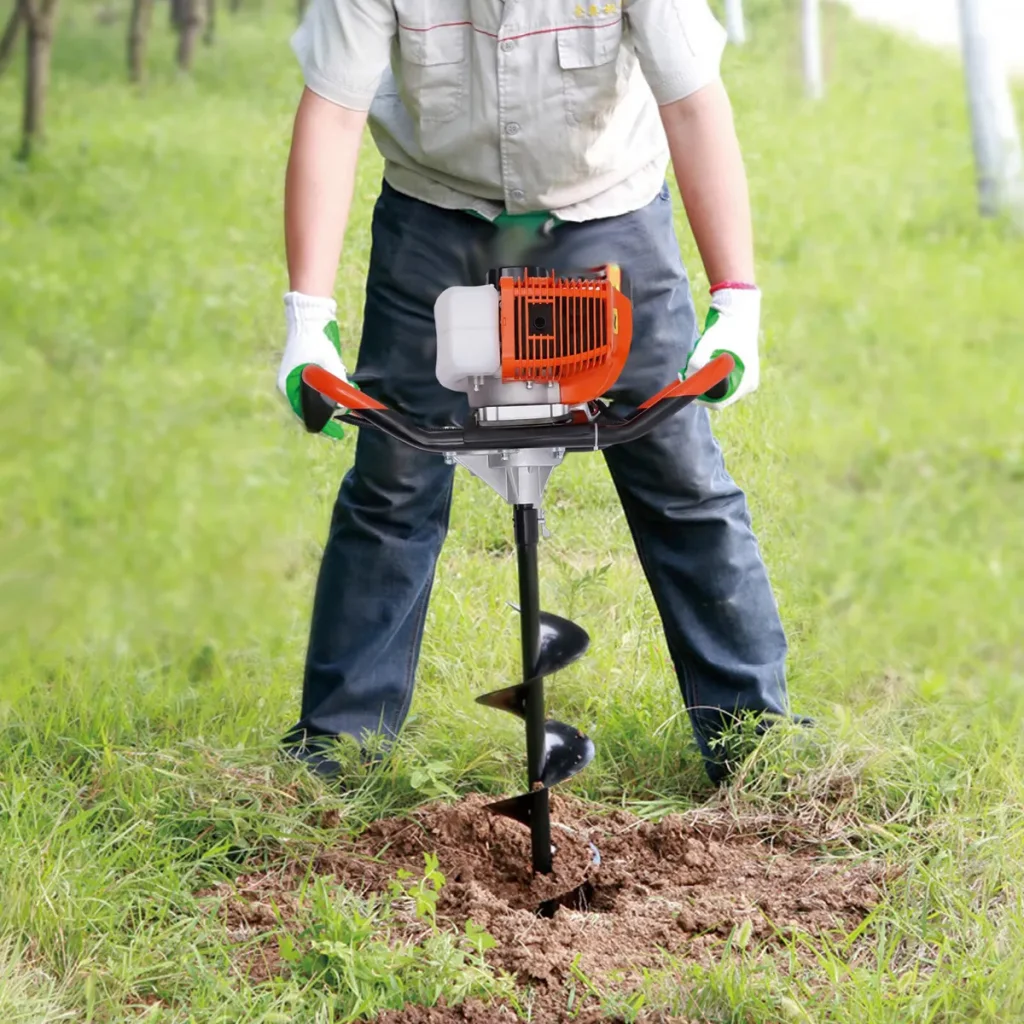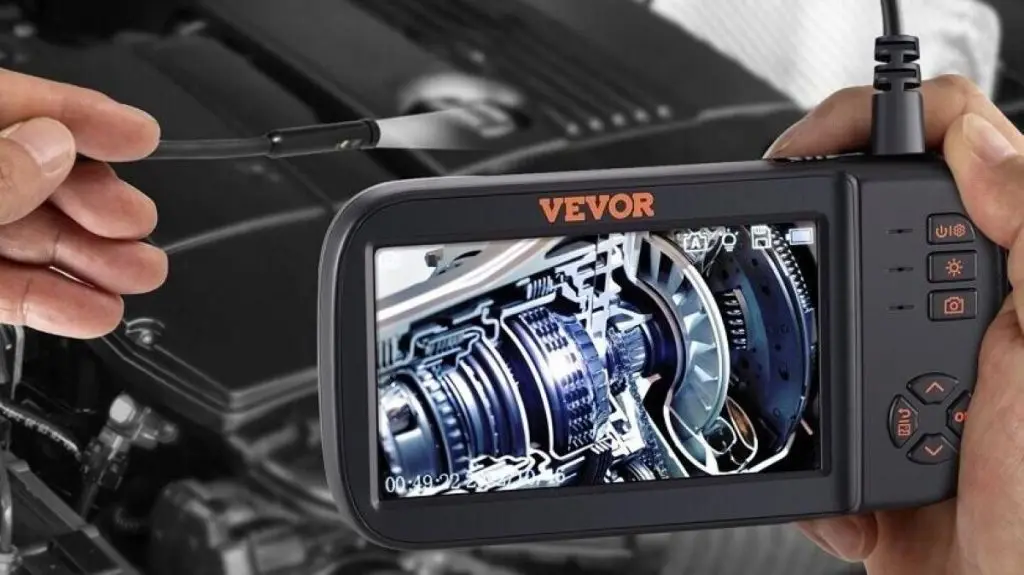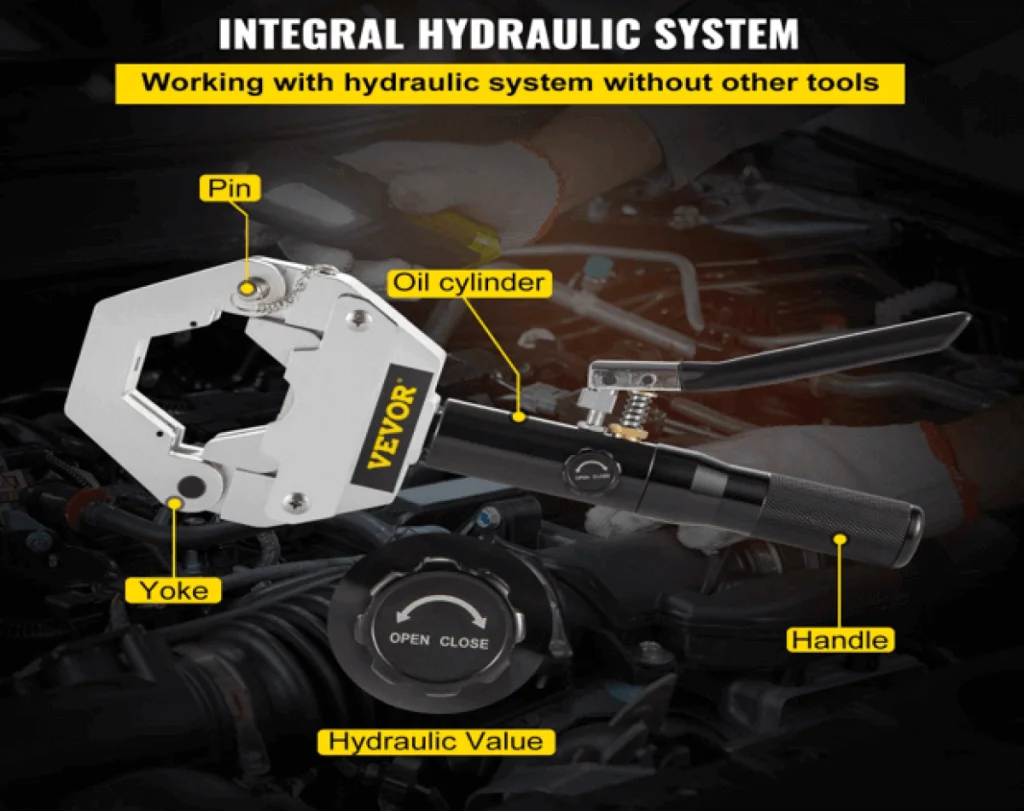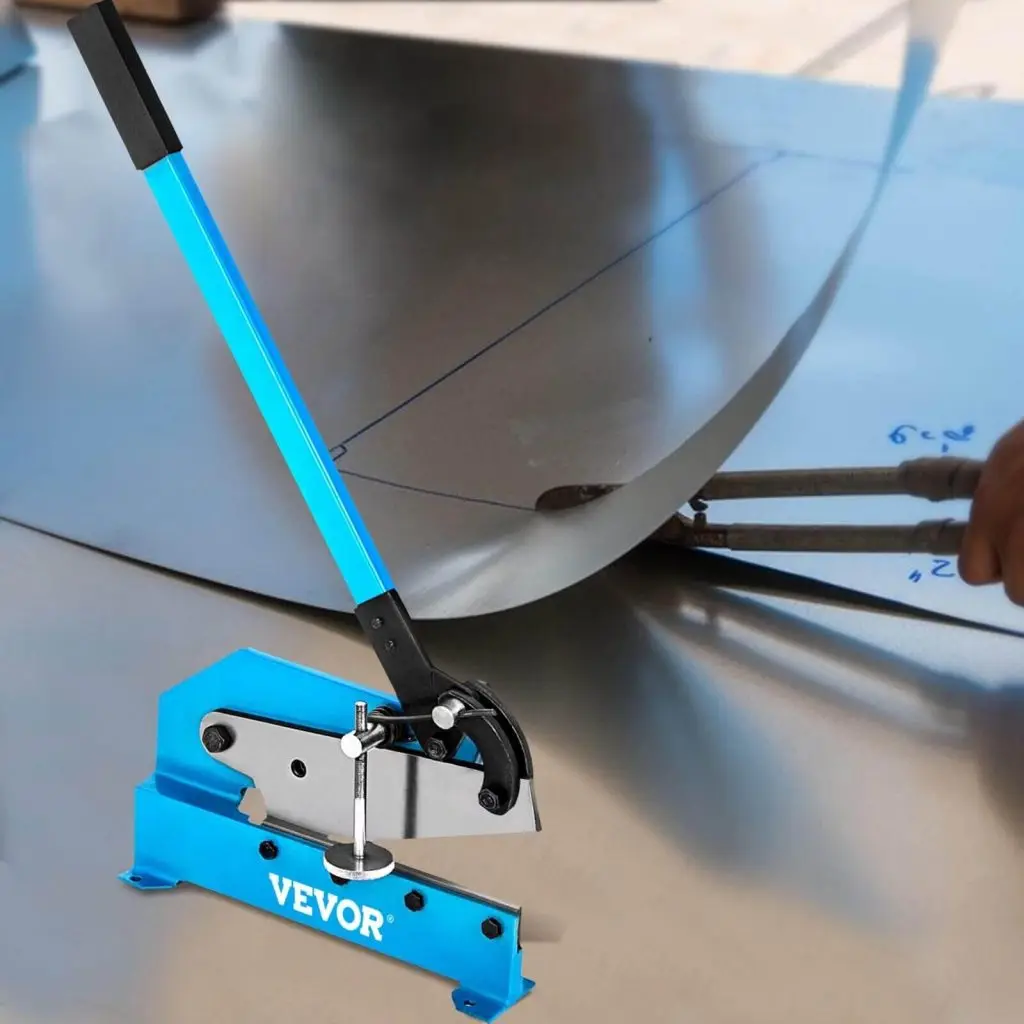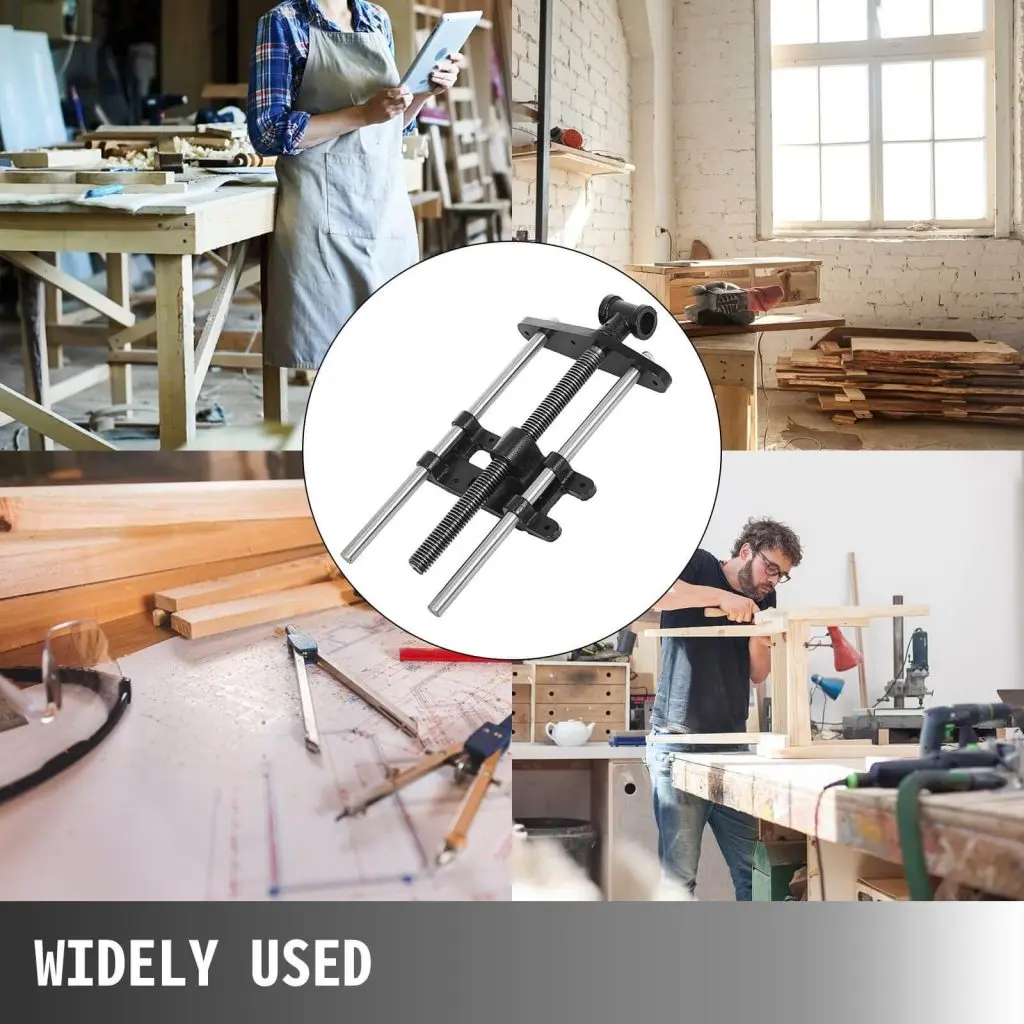Introduction about the significance of auger and post hole digger
Both the Augers and post-hole diggers are useful tools used for drilling and creating holes in both soil and ice. These tools have various types, every type is designed for specific purposes. Augers and post-hole diggers provide versatile solutions for diverse drilling needs. This blog post consists of valuable information about the main difference between auger vs post hole digger, their various types, and their use.
Table of contents
- Introduction about the significance of auger and post hole digger
- Part 1: Difference between an auger and a post hole digger
- Part 2. Compared: post hole digger vs auger
- Part 3. Maintenance Tips for Hand Auger vs Post Hole Digger
- Top Post Hole Digger and Auger Products for Maximum Productivity
- FAQs
- Conclusion
Part 1: Difference between an auger and a post hole digger
1.1 What is an Auger
An Auger is a versatile tool primarily used for drilling holes. It has many applications ranging from industrial use to drilling holes for poles or deck posts.
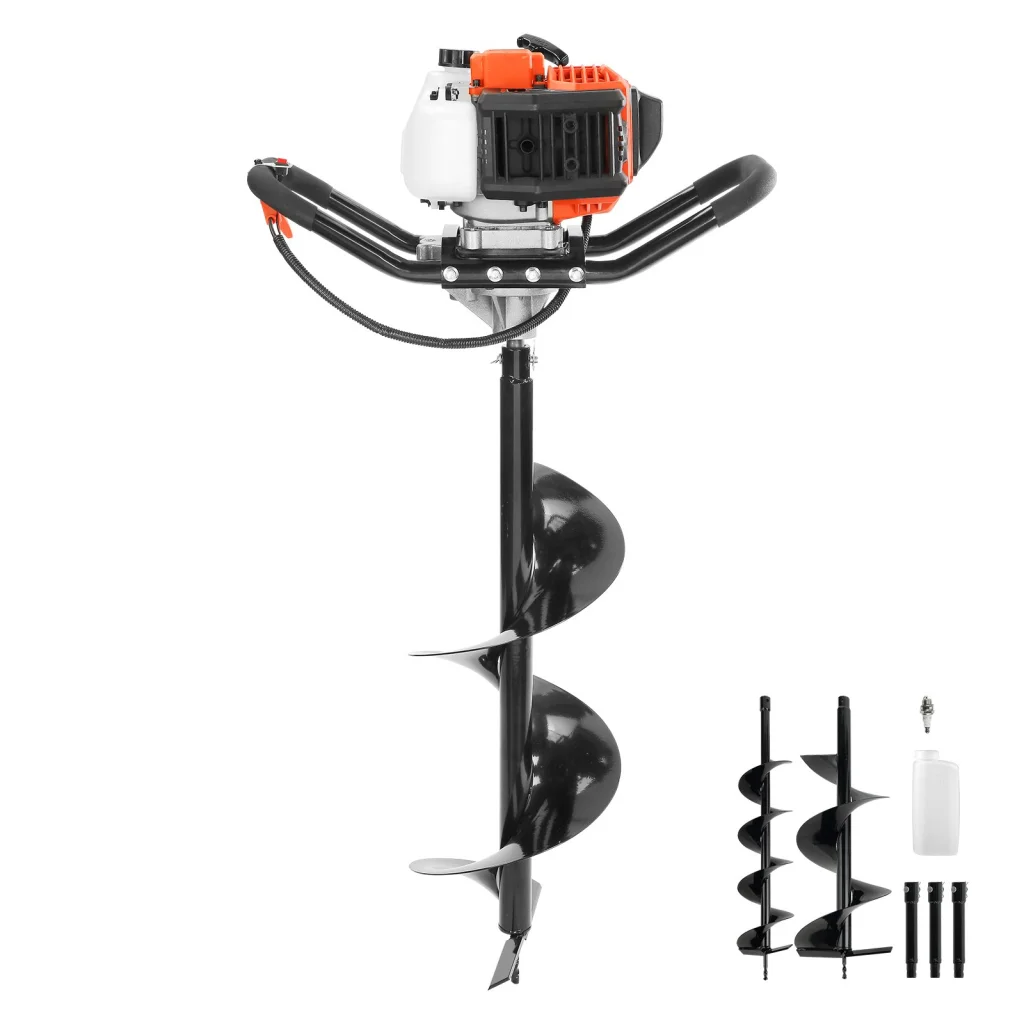
1.2 Common types of augers include:
Ice Auger
Their blades are specifically crafted, sharpened, and shaped to cut and crush ice efficiently.
Earth Auger
This consists of a rotating metal pipe or rod with one or more blades attached at the lower end. Primarily used in the agriculture industry.
Grain auger
This tool is designed to transport large quantities of grain. The auger rotates, and grains are drawn upwards and pushed into the shaft, eventually expelled from the opposite end.
Hand auger
Hand augers are versatile tools used for digging shallow holes for various purposes, including unclogging drains, making post holes, and more.
Garden auger
These tools are invaluable for various gardening and landscaping tasks, including digging plant bulbs, post holes, grass plugs, and more.
1.3 What is a hole digger
By using the post hole digger you can dig holes within the ground. Take this as reference, post hole digger assists in plantations, fences, and even signposts. Whether manual or mechanical, all post hole diggers serve the same primary function. They jab into the soil with their blades, grasp a portion, pull themselves out, and deposit the excavated soil to the side. Post-hole diggers also have different types.
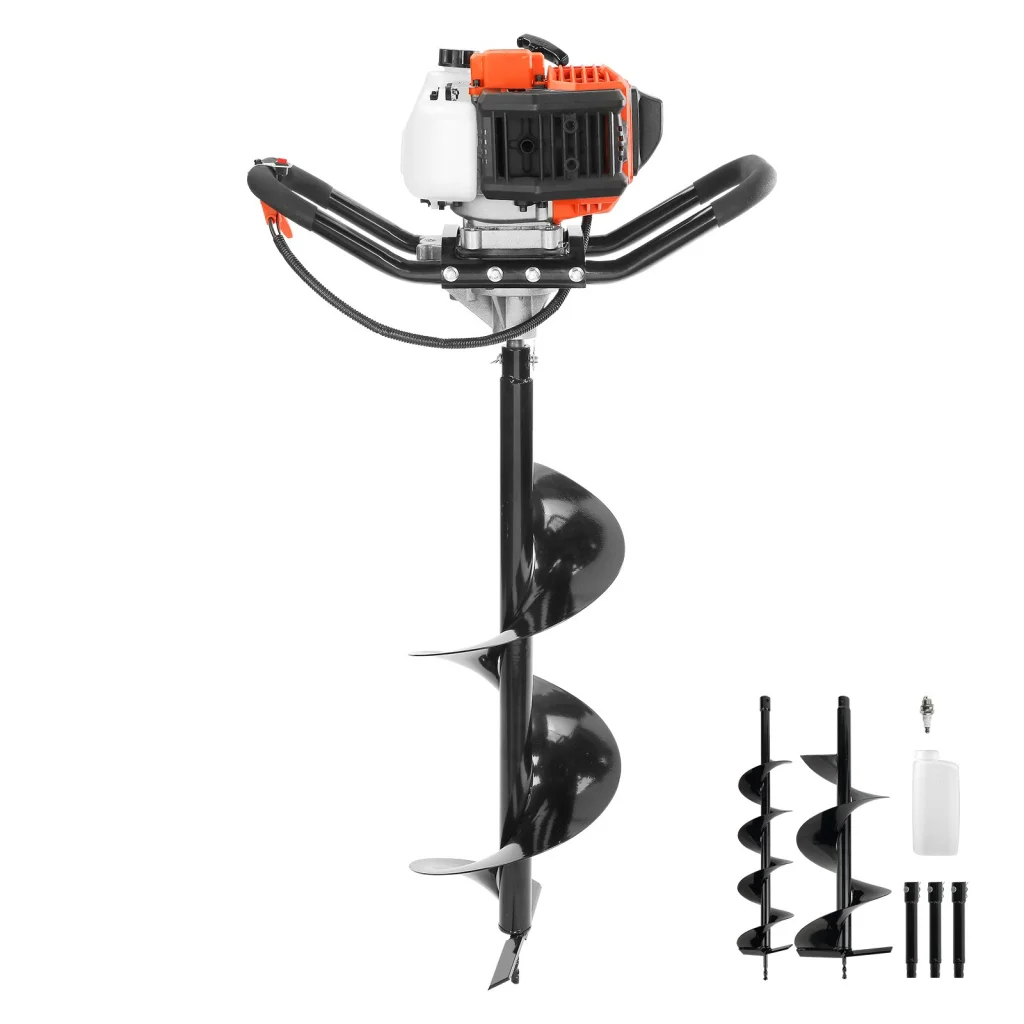
1.4 Types of post hole diggers
Traditional
A traditional post-hole digger, also known as a hole pincer, comprises two articulated shovel-like blades, attached with two handles for opening and closing the blades.
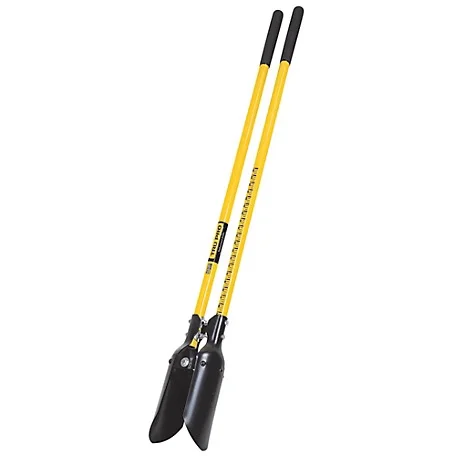
Scissor-action
Scissor-action post hole diggers are constructed with heavy-duty all-steel with large opening blades. It is action is similar to scissors.
Universal
This tool features a hardwood shank and a steel cutting arm, making it ideal for use in tight spaces adjacent to structures.
Double-pivot
The double-pivot is an industrial-grade tool equipped with hardened steel blades, ensuring exceptional strength and durability.
Offset post hole digger
It is specifically designed for digging extra-deep holes required for railing, fences, and post installations.
Part 2. Compared: post hole digger vs auger
Do you wonder which is better: post hole digger vs auger? A post-hole digger has two articulated shovel-like blades attached at one end. The blades are attached to handles that operate blades for opening and closing. This tool is suitable for one task which is digging soil. While a post auger is a drilling machine. A Post auger is a tool that is operated with the help of a rotating shaft. This rotating shaft is attached with one or more blades to the lower end which helps in digging holes. Post auger is not confined to single-use but is used for various purposes like cutting through ice, rocks, concrete, or frozen ground. The choice depends on the job requirements and your needs.
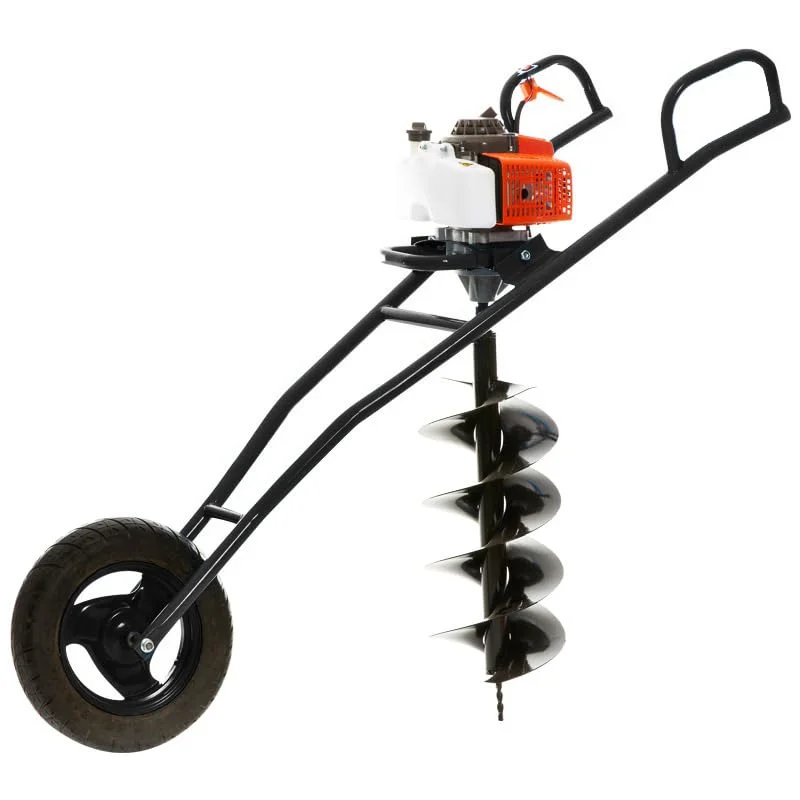
Applications of post hole digger vs auger
The post hole diggers are mainly designed to focus on one task which is digging holes into the soil. While augers have many applications depending on their type, i.e. cutting rocks, concrete, ice, or frozen ground.
Hand Auger Vs Post Hole Digger Advantages:
Cost
In a post hole digger vs auger cost comparison, a post-hole digger is cheaper than a hand auger. Whereas the hand auger is more cost-effective in the long run.
Power
An old-fashioned post-hole digger needs manpower to operate. Whereas an auger needs a power-operated machine which makes it more efficient and powerful.
Speed
In terms of speed, hand auger vs post hole digger. Hand auger is more efficient and saves time, especially for tasks like digging holes.
Depth
In terms of depth, a hand auger vs post hole digger, with the former capable of digging deeper holes. Typically, an auger can dig between 3-4 feet, while a post hole digger can only reach about ¾ of its handle’s length.
Safety
Using a hand auger requires some maintenance and caution to avoid damage and potential injuries. Conversely, a simple post-hole digger requires no special care during use and does not demand extra attention for safety.

Key Differences Between Post Hole Digger and Auger
Purpose of each garden tool
Both auger and post hole diggers are utilized for drilling purposes. The post-hole digger is employed for digging into the ground for common tasks such as installing signposts, fences, cutting and scraping soil, or planting saplings. Conversely, hand augers are typically used for digging shallower holes, commonly for gathering soil samples, making post holes, and more.
Surface penetration
Surface penetration differs between hand augers vs post hole diggers. A post-hole digger can penetrate about ¾ of its handle length, meaning a five-foot post-hole digger can dig approximately 3 ½ feet deep, with depth decreasing on harder surfaces. In contrast, augers can generally dig between 3 and 4 feet deep, though results may vary depending on the specific type of auger.
Performance
Manual post-hole diggers consume a significant amount of time and require intensive labor, whereas augers can dig much more quickly and efficiently.
Practical Use of Digger and Auger
How to Use a Post Hole Digger
Using a post hole digger is time-consuming and laborious. But using it is a simple process. Begin by marking the point where you intend to use the tool. Then, squeeze the handles together to open the blades, and jab them into the ground. Once inserted, move the handles wide apart to close the blades around the soil and pull them out. To release the soil, open the blades on the side by squeezing the handles.
How Do I use a Hole Auger?
An auger is a spiral-shaped tool commonly used for drilling holes into the ground and other surfaces. It consists of a spiraling metal shaft with a blade mounted at the end, known as “flighting”. The flighting rotates to scrape, cut, or siphon out drilled materials, allowing debris such as soil and ice to move along the flighting and out of the hole. Augers come in various types designed for different purposes, each with its specific operation mechanism. Examples include power earth drills, ice augers, and grain augers. Augers can be operated manually or attached to electric motors for enhanced efficiency.
Part 3. Maintenance Tips for Hand Auger vs Post Hole Digger
Follow these simple steps for maintaining a hand auger vs post hole digger.
Proper Cleaning:
Wipe off dirt, debris, or grease from blades using dry cleaning towels. As dirt, debris, and grease accumulated on blades can cause permanent damage.
Oiling: Auger vs Post Hole Digger:
Frequent oiling will protect the blades from rust and corrosion. After cleaning, spray some oil on the blades, handles, and joints of the post hole diggers and augers.
Varnish: Post Hole Digger versus Auger:
Use good quality varnish for the post hole diggers to keep them in excellent shape. While auger does not require varnish.
Tightening of Blades:
Before using augers, check and tighten blades and screws to avoid blade vibration during the cutting of holes.
Storage:
Always keep them in a clean and dry place. Keep the blade of the auger intact when not in use to protect it.
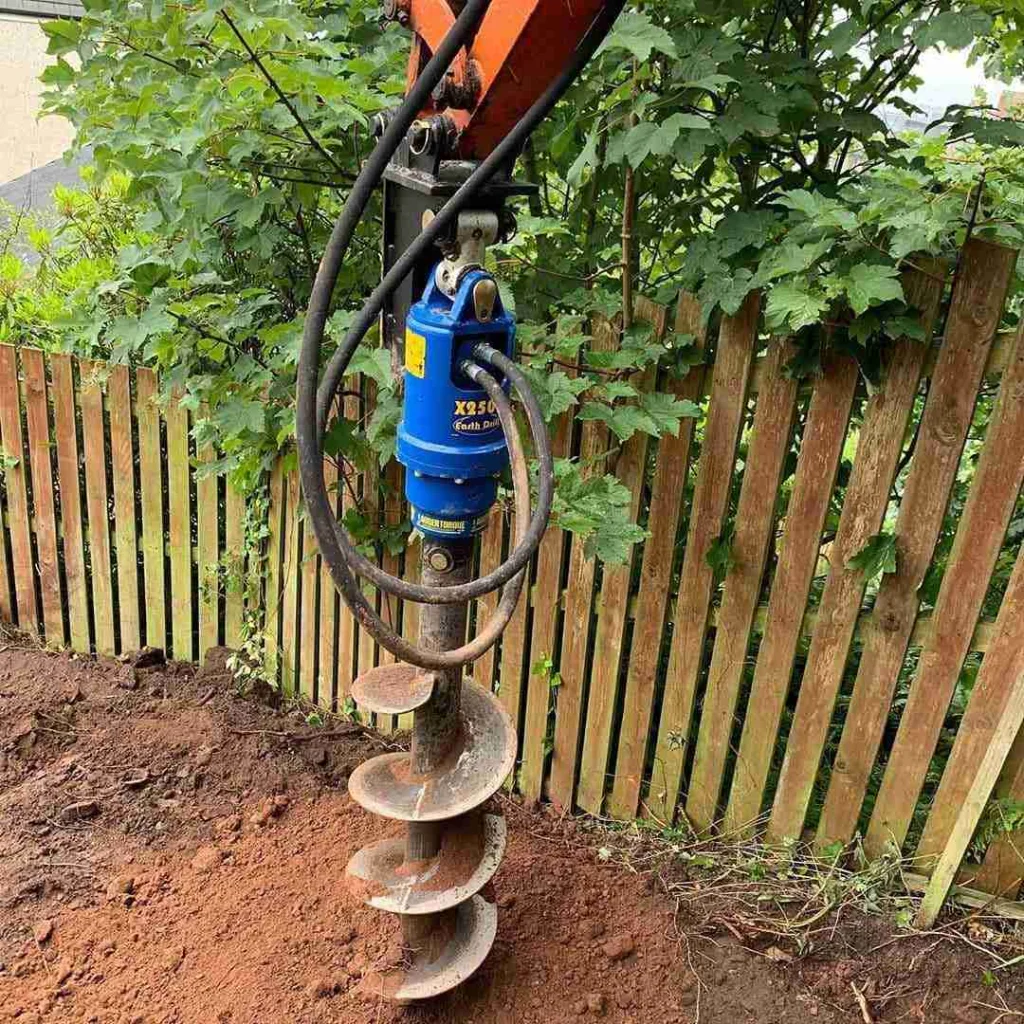
Top Post Hole Digger and Auger Products for Maximum Productivity
Some of the qualitative post hole digger products that you need to choose are:
52cc Post Hole Digger
See off your digging tasks using VEVOR Post Hole Digger, a 52cc high-grade 1450 W digger. This unit will pulverize all types of soil with its revving engine of 9350RPM power. Its alloy gears and ball-bearing shafts prove to be capable of withstanding any terrain. Mix fuel effortlessly at a 1:25 ratio for effective performance. The drill bit made of alloy steel with a powder coating not only resist corrosion but also contributes to its longevity. Cranking is easy with a 1.2m length cord. Its 1.2l fuel tank allows you to drill unceasingly. With a 30-inch drill bit and 7.8-inch extension, reach depths in ease. In addition, you get a full accessory package plus EPA certification for environmental guarantee.

43cc Auger
This VEVOR Post Hole Digger is strong enough to work through any soil type with the powerful 43cc engine and the RPM of 9350 for maximum power. It has alloy gears and ball-bearing shafts which enable it to be stable in variety of types of soil. With a simple 40:1 oil-to-gas ratio, fill-up is as simple as using an oil can. The ample cooling holes help to sustain the engine’s work. The 8″ drill bit is made from the powder-coated alloy metal, which prevents corrosion and you can be assured of its stability as it is steel welded to the handle. The long pull cord and 1.2L fuel tank make a starting and working processes simple, so you can drill several holes without stopping. It is the icing on the cake with accessories and EPA certification because it’s your best bet for efficient and green digging.

Keep reading for insights on best in class Electric Auger Post Hole Digger of 2024.
FAQs
What size of a post hole auger would be suitable for 4*4 posts?
For a 4×4 post, a 7-inch or 8-inch auger would be best. Augers can be used accordingly to create wider holes if needed.
Will post hole diggers work effectively on wet soil?
Wet soil can complicate and hinder digging when using post hole diggers. That is why post hole diggers do not work effectively on wet soil.
How to maintain a post hole auger?
To maintain post hole auger, clean its blades thoroughly after every use. To prevent corrosion, apply oil on the blades. Store them in a clean and dry place when not in use.
How deep can a post hole auger drill?
Generally, a post-hole auger can drill 3-4 feet deep. How deep a post-hole auger can drill depends on its type and specification.
Should I sharpen the post-hole digger before using it?
If a post hole digger is in bad condition, it may require sharpening. Otherwise, it is recommended to sharpen a post hole digger once a year.
Conclusion
To sum up, knowing the differences between an auger vs post hole digger is a must. Now you know the advantage that every one of these tools gives on certain assignments. Keep in mind that the post hole digger you select performs the task effectively and with high accuracy. Do not be afraid to check out VEVOR’s post hole digger product line in order to discover the ideal solution to your problems. Whether it is driving fence posts or sowing trees, the use of suitable equipment increases your productivity. Take the right step today at VEVOR and get yourself the best post hole digger that will save you time and effort when digging.

